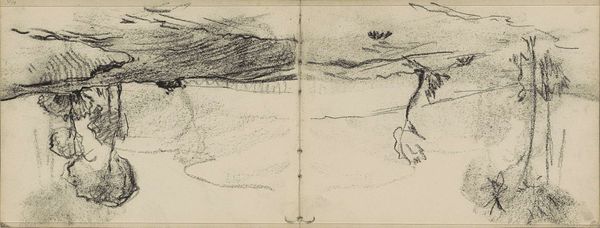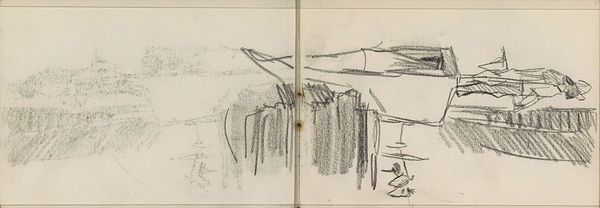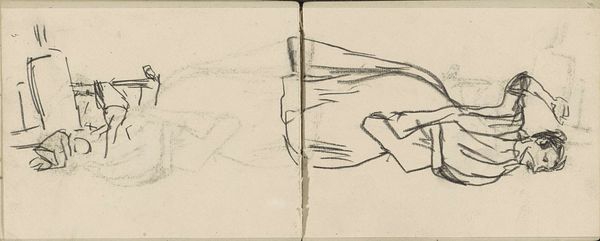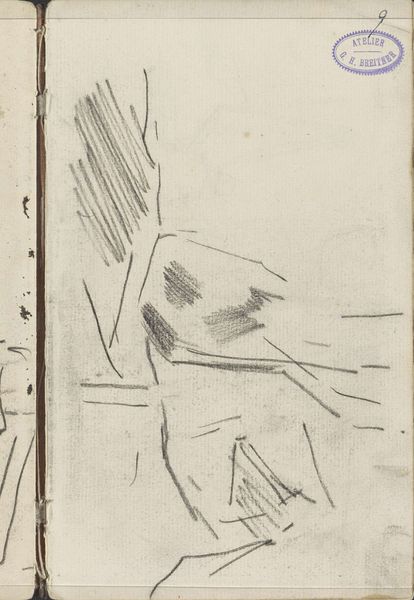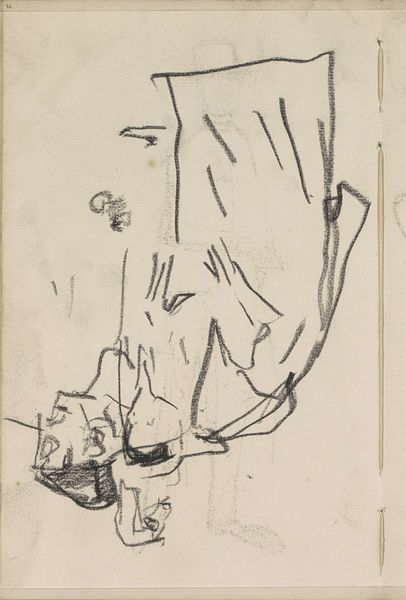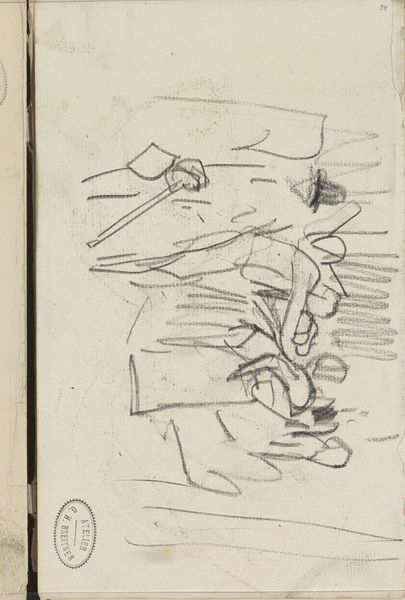
Copyright: Rijks Museum: Open Domain
Editor: So, this is George Hendrik Breitner's "Zittende vrouw in interieur," created sometime between 1886 and 1903. It’s a pencil drawing, a pretty intimate portrait I think, but very gestural, like a snapshot. What strikes you about it? Curator: As a materialist, I see more than just a portrait. Consider the production itself: the swiftness of pencil on paper. Breitner captures this woman through readily available, mass-produced materials. Do you see the labor involved, even in such a seemingly spontaneous work? How might the speed and ease of pencil contribute to the Impressionistic feel? Editor: I suppose, I hadn't considered the pencil itself. I was thinking about the pose – how it almost feels voyeuristic, a quick sketch done on the sly. Curator: Exactly! And that perceived 'snapshot' aesthetic is facilitated by these inexpensive materials. It challenges the traditional boundaries of formal portraiture, doesn't it? This wasn't an oil painting commissioned by the sitter, it's a glimpse into a private moment captured with a common tool. Look at the unworked sketch on the facing page - evidence of process and production. Does it alter your reading of the left side? Editor: Definitely. It makes me think about how accessible art-making was becoming, and how artists like Breitner were using everyday tools to document everyday life. It democratizes both the making and the viewing, in a way. Curator: Precisely! And understanding those material conditions gives us deeper insight into the artwork's meaning and place in society. Editor: I've always focused on subject matter and composition. I realize I haven’t considered the broader impact of materials like the humble pencil on the artistic landscape. Curator: Examining the material aspects opens up new avenues for understanding the work and its cultural context. Editor: I will keep an eye on how art’s physical making changes art history.
Comments
No comments
Be the first to comment and join the conversation on the ultimate creative platform.
